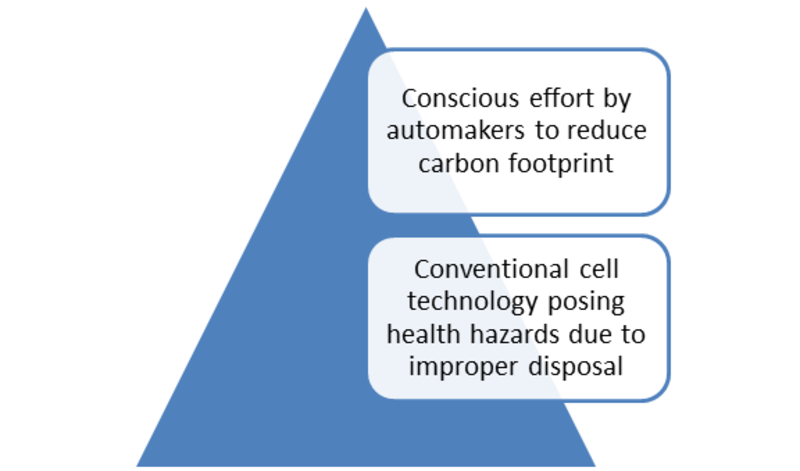Pune, India, April, 2023 /MRFR Press Release/- Market Research Future published a half cooked research report on global automotive fuel cell market. The automotive fuel cell market is expected to grow over the CAGR of around 14.92% during the period 2025 to 2035.
Automotive Fuel Cell Market Highlights
The automobile industry is rapidly undertaking research in the electric vehicle (EV) technology. The biggest segment in EV is the battery operated vehicles. The advantages of the battery operated EV is low operating and maintenance cost and low carbon footprint.. The drawbacks of this variety, however, are low to medium range of the automobile on a single charge, and high charging time, which ranges from 45 minutes to 2 hours. To overcome these disadvantages, the fuel cell technology is preferred. The Fuel cells can replace the internal combustion engine, require average time of 3 minutes for charging and can travel up to 500 kilometers between chargingThus, the fuel cell technology is much more effective and efficient than conventional battery operated vehicles and internal combustion engine operated vehicles.
Browse In-depth Details [Table of Content, List of Figures, List of Tables] of Automotive Fuel Cell Market Research Report
On the basis of region, the market is segmented into North America, Asia Pacific, Europe, and Rest of the World. Asia Pacific region is expected to drive the sales of the global automotive fuel cell market. Countries such as China, Japan, Hong Kong and India are heavily stressing on the use of cleaner energy resources. Special subsidies are provided by these governments to the automakers who invest specifically in the greener sources of fuel. The primary concern of the countries is the increasing population in this region. The expanding middle class and the rising purchase power of the customers is driving the automotive sales in this region. Countries such as India and China are expected to be the next automotive headquarter of the world post 2030. The huge sales and exports of the automobiles in these areas will put a heavy burden on the ecology and climate causing climate changes. To cope with the impending ill effects on the environment, the countries are trying to balance the rising automotive sales with the use and push for greener technology and fuel options. The North America region has been the largest automotive market for a long time. The average public transport system, huge road infrastructure and considerable per capita income makes consistent automotive sales, a surety. The people in this region prefer large SUVs and mini trucks, which are average in terms of fuel mileage/high fuel consuming vehicles. This puts an added impact on the ecology in this region. Europe is the base to the headquarters of some of the biggest players in the automotive market. The high-end luxury automobiles manufactured and preferred in this region are also preferred by the customers in this region. These low on mileage and high on fuel consumption automobiles require clean fuel for their operation, but still put an added impact on the environment due to the huge volumes of fossil fuel being used up. Thus, to assist the growing demand of automobiles while trying to balance the environmental impact, the automotive fuel cell technology will be the preferred source of fuel and energy by majority automakers in the years to come.
Drivers:

Scope of the Report
This study provides an overview of the Global Automotive Fuel Cell Market, tracking four market segments across four geographic regions. The report studies key players, providing a five-year annual trend analysis that highlights market size, volume and share for North America, Europe, Asia Pacific (APAC) and Rest of the World (ROW). The report also provides a forecast, focusing on the market opportunities for the next five years for each region. The scope of the study segments the Global Automotive Fuel Cell Market by its Electrolyte Type, Components, Power Output, Fuel Type, Vehicle Type and Region.
- By Electrolyte Type
- PEMFC
- PAFC
- By Components
- Fuel Processor
- Power Conditioner
- Fuel Stack
- By Power Output
- <100KW
- 100-200KW
- >200KW
- By Fuel Type
- Hydrogen
- Methanol
- Others
- By Vehicle Types
- Passenger Vehicle
- Light Commercial Vehicle (LCV)
- Heavy Commercial Vehicle (HCV)
- By Region
- North America
- Europe
- Asia Pacific
- Rest of the World
Key Players
The key players in automotive fuel cell market are Ballard Power Systems Inc. (Canada), ITM Power (U.K.), Hydrogenics (Canada), Plug Power (U.S.), Automotive Fuel Cell Cooperation (Canada), and Ceramic Fuel Cells Ltd (Australia). Delphi Technologies (U.K.), Doosan Fuel Cell America (U.S.), Nedstack (The Netherlands) and Plug Power (U.S.) are among others.